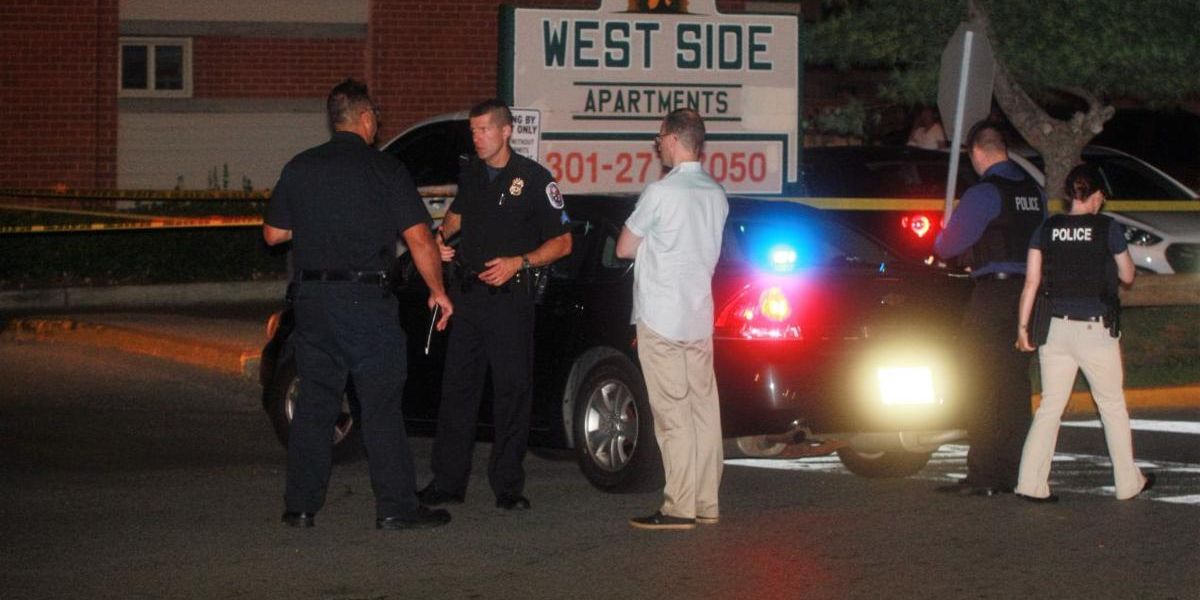ALERT! New Covid-19 Variants on the Rise: What You Need to Know About “FLiRT”
The cough and cold virus season may be over in the United States, but a new set of COVID-19 variations is spreading, raising concerns about a potential summer wave. The family of variants, known as “FLiRT” after its alterations, includes KP.2, which is now the dominant form in the United States. In recent weeks, KP.2 quickly surpassed JN.1, the omicron subvariant that caused a surge in COVID cases this winter.
According to the most recent data from the United States Centers for Disease Control and Prevention, KP.2 accounts for one out of every four infections countrywide.
During the two weeks ending April 27, KP.2 accounted for roughly 25% of cases in the United States, up from around 10% the previous two weeks ending April 13. After KP.2, JN.1 is the second most prevalent variant, accounting for 22% of cases, followed by two JN.1 subvariants, JN.1.7 and JN.1.13.1.
Another FLiRT form, KP.1.1, is also present in the United States, however, it is less common than KP.2. According to the CDC, it presently accounts for around 7.5% of all infections countrywide.
Although cases and hospitalizations have decreased and the country is in a COVID-19 lull, the new FLiRT variations are raising fears of another wave of infections this summer. Will there be another COVID-19 surge? What are the symptoms of FLiRT variants? Are vaccinations still effective? We chatted with experts to discover more.
What are the FLIRT Variants?
The FLiRT variations, KP.2 and KP.1.1, are spinoffs of JN.1.11.1, a direct descendant of JN.1, and were first identified in wastewater samples from across the country.
Dr. Albert Ko, an infectious disease physician and professor of public health, epidemiology, and medicine at Yale School of Public Health, tells TODAY.com that the new variations feature two additional mutations that distinguish them from JN.1 and appear to provide an advantage over prior variants.
The nickname “FLiRT” is derived from the precise designations for their mutations, according to the Infectious Disease Society of America.
The FLiRT variations, like other COVID-19 strains that have acquired supremacy in the United States over the previous year — JN.1, HV.1, EG.5 nicknamed Eris, and XBB.1.16 or Arcturus — belong to the omicron family.
The creation of KP.2 and other FLiRT variants is the “same old story,” according to Andrew Pekosz, Ph.D., a virologist at Johns Hopkins University. The SARS-CoV-2 virus mutates, resulting in a new, more contagious form that becomes the dominant strain. “The timeline that it happens in, three to six months, is much faster than we see with other viruses like influenza,” Pekosz said.
Are the New Versions More Transmittable?
“It’s still early days, but the initial impression is that this variant (KP.2) is rather transmissible,” says Dr. William Schaffner, professor of infectious diseases at Vanderbilt University Medical Center, to TODAY.com. The number of instances caused by KP.2 is increasing, while the proportion caused by other versions is dropping, implying that KP.2 has advantages, according to the experts.
According to Pekosz, KP.2 appears extremely similar to its parent strain, JN.1, which is highly contagious. “Except it has these two mutations. … I think these two mutations together are making KP.2 a better virus in that it maintains its ability to transmit, but also now evades some of the pre-existing immunity in the population,” Pekosz said.
According to the CDC, more than 97% of people in the United States have natural or vaccine-induced antibodies against the SARS-CoV-2 virus, but this immunity declines with time.
Low vaccination rates and declining immunity create a vulnerable population, perhaps allowing FLiRT mutations to take hold. Only time and additional data will tell, the experts say.
According to Schaffner, laboratory findings indicate that KP.2 is sufficiently altered to provide only limited protection against existing vaccines and prior infection immunity. “We’ll have to see how true that is, but it appears, over time to be becoming a more prominent variant,” he said. “It’s still really early in the emergence of KP.2, but I don’t think we need to sound the alarm bells as of yet,” Ko said.
Will There Be a Summer Surge?
The researchers say it’s too early to determine if the FLiRT versions would create a summer wave or surge. However, it is apparent that COVID-19 is still circulating and will not go away anytime soon.
“We encounter these illnesses year-round, at varying levels… We’re probably not at the point yet when COVID will disappear totally at any time of year,” adds Pekosz.
Test positivity, an early indicator of case levels, is at 3% as of April 20, down 0.4% from the previous week and a significant drop from approximately 12% in mid-January, according to the CDC. (The CDC no longer tracks the overall number of cases in the United States.)
“We’re not seeing a lot of hospitalizations, and we’re certainly much lower than we were in the winter, so I’d say right now we’re at a low point, which is reassuring,” Ko said.
According to CDC wastewater statistics, COVID-19 virus activity is currently “minimal” despite being deemed high or extremely high for the majority of January and February. “It seems like transmission is pretty low right now, and that makes sense because usually, the big peaks are in the winter when people are inside and in more contact,” Ko said.
COVID-19 has previously triggered summer waves, which are typically lower than winter surges, according to specialists. “I don’t think that we’ll see any kind of massive surge in cases,” Pekosz said.
Based on current COVID-19 trends, Ko speculates that “KP.2 may cause a small wave, but not necessarily the large peaks that we saw in the winter—again, it is too early to tell.”
Scientists are still attempting to figure out why COVID-19 occurs in certain seasons. However, one thing is clear: “This virus is now integrating itself into our population and way of life,” adds Schaffner.
Ko identifies numerous reassuring factors. First, KP.2 is not a highly divergent variety, meaning it lacks a substantial number of novel mutations that distinguish it from other strains. Second, several persons have developed immunity after being infected with the FLiRT variant ancestor JN.1. Finally, during the summer, people spend less time indoors, giving the virus fewer opportunities to spread.
“I’m not expecting a large surge in the summer, but again, we have to be cautious and we have to follow the data,” Ko said. “We always have to be humble because SARS-CoV-2 has taught us a lot of new things.”
What Are the Symptoms of the Latest COVID Variants?
It is too early to tell whether the symptoms of KP.2 and other FLiRT variations differ from previous strains. “The FLiRT mutations are unlikely to produce particularly unique symptoms. “It appears to be following the other subvariants right now,” Schaffner says.
The symptoms of the FLiRT variations are comparable to those caused by JN.1. These include:
- Sore throat.
- Cough
- Fatigue
- Congestion
- Runny nose.
- Headache
- Muscles ache
- Fever or chills
- New loss of taste or scent.
- Shortness of breath or trouble breathing.
- Nausea or vomiting.
- Diarrhea
According to the CDC, the type and intensity of symptoms a person suffers are largely determined by their overall health and immunity rather than the variation that caused the infection.
According to Schaffer, the FLiRT variations, like JN.1 and other omicron subvariants, appear to cause less severe infections. “There’s no evidence now that makes us think KP.2 is more virulent or more able to cause severe disease than the prior variants,” Ko said.
Do Vaccinations Protect Against Novel Variants?
“Early laboratory studies indicate that the vaccines will continue to provide protection against KP.2 — a little less protection, but not zero by any means,” Schaffner said.
As the virus mutates, it becomes increasingly distinct from the omicron strain targeted in the most recent upgraded booster, launched in the fall of 2023. “We would expect that to happen, and we anticipate the plan is to have an updated vaccine in the fall available to everyone,” Schaffner said.
Even if immunizations do not prevent infection, they can provide some protection by reducing severe sickness, hospitalization, and COVID-19 consequences, TODAY.com previously reported. “It’s still clear that the more severe cases that come into the emergency room predominate in people who either are not up to date on their vaccines or haven’t gotten a vaccine in a really long period,” Pekosz said.
Vaccination is especially crucial for the elderly, according to Pekosz, which is why the CDC has recommended that persons 65 and older receive an additional dose of the improved COVID-19 vaccine from 2023 to 2024.
Unfortunately, vaccination rates remain low, according to the experts. “The vaccines are still showing signatures of effectiveness, but they’re not being utilized anywhere close to the level that they should be,” Pekosz said.
The experts point out that all current PCR and at-home testing recognize KP.2 and other FLiRT variations. (However, if you have COVID symptoms and test negative, it’s best to stay at home to avoid potentially exposing others, TODAY.com previously reported.
If you use an at-home antigen test, make sure to verify the expiration date and whether it has been extended by the United States Food and Drug Administration. “Antivirals (including Paxlovid) are also effective. “There are no major signals of antiviral resistance in the population, which is a good sign,” adds Pekosz.
How to Protect Against New FLiRT Variants?
While it is too early to predict how the FLiRT variations will play out this summer, people can always take precautions to protect themselves and others from COVID-19.
The CDC suggests the following preventative strategies:
- Stay up to date with COVID-19 vaccinations.
- If you have symptoms or have been exposed to COVID-19, test for the virus.
- Stay at home if you’re sick.
- Return to normal activities only after the fever has subsided and the symptoms have improved for at least 24 hours.
- Practice proper hand hygiene.
- Improve the ventilation.
- Wear a mask in crowded indoor areas.
- Practice social distancing.











